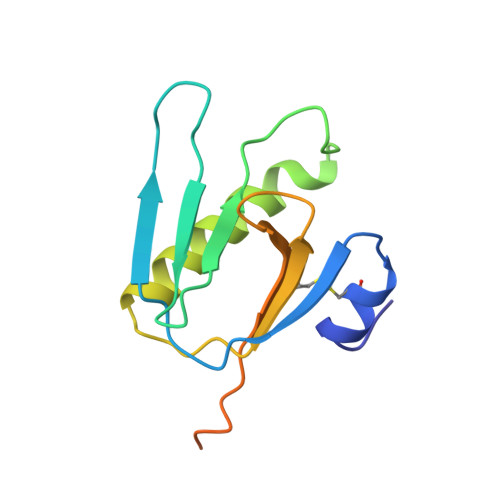Crystal structure of the B subunit of Escherichia coli heat-labile enterotoxin carrying peptides with anti-herpes simplex virus type 1 activity.
Matkovic-Calogovic, D., Loregian, A., D'Acunto, M.R., Battistutta, R., Tossi, A., Palu, G., Zanotti, G.(1999) J Biological Chem 274: 8764-8769
- PubMed: 10085117
- Primary Citation of Related Structures:
1B44, 1LTR - PubMed Abstract:
Two chimeric proteins, consisting of the B subunit of Escherichia coli heat-labile enterotoxin with different peptides fused to the COOH-terminal ends, have been crystallized and their three-dimensional structure determined. The two extensions correspond to (a) a nonapeptide representing the COOH-terminal sequence of the small subunit of herpes simplex virus type 1 ribonucleotide reductase and (b) a 27-amino acid long peptide, corresponding to the COOH-terminal end of the catalytic subunit (POL) of DNA polymerase from the same virus. Both proteins crystallize in the P41212 space group with one pentameric molecule per asymmetric unit, corresponding to a solvent content of about 75%. The overall conformation of the B subunit pentamer in the two chimeric proteins, which consists of five identical polypeptide chains, is very similar to that in the native AB complex and conforms strictly to 5-fold symmetry. On the contrary, the peptide extensions are essentially disordered: in the case of the nonapeptide, only 5 and 6 amino acids were, respectively, positioned in two monomers, while in the other three only 2 residues are ordered. The extension is fully confined to the surface of the pentamer opposite to the face that interacts with the membrane and consequently it does not interfere with the ability of the B subunit to interact with membrane receptors. Moreover, the conformational flexibility of the two peptide extensions could be correlated to their propensity for proteolytic processing and consequent release of a biologically active molecule into cultured cells.
- Department of Organic Chemistry and Biopolymer Research Center, University of Padova, Via Marzolo 1, 35131 Padova, Italy.
Organizational Affiliation:
















